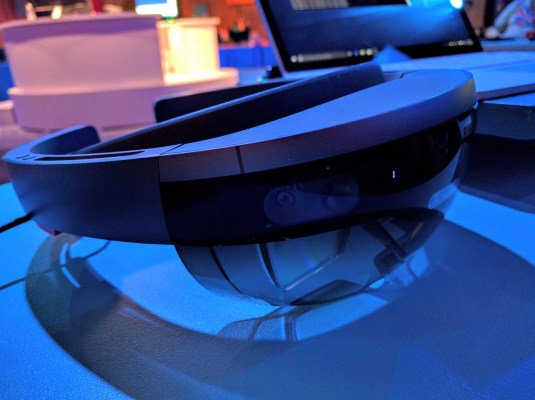HoloLens, Microsoft’s $3,000 mixed-reality goggles (or “the world’s first self-contained holographic computer” in Microsoft’s parlance), was only available in the U.S. and Canada so far. Today, however, the company announced that it will also start selling the devices in Australia, France, Germany, Ireland, New Zealand and the United Kingdom. Preorders start today and the devices will ship in late November.
We hear that Microsoft’s yield for producing HoloLenses is higher than it expected, so the company is now also able to bring it to new regions faster than it expected. What’s gating an even wider rollout, though, is that Microsoft still needs to get its certifications from the international equivalents of the U.S.’s FCC as it enters new markets. It’s worth noting that even though it’s officially only rolling out in a few European countries, the single European market pretty much means anybody in Europe will be able to get a HoloLens now.
Like in the U.S. and Canada, potential buyers will be able to choose between the standard $3,000 Development Edition or the $5,000 Commercial Suite that includes better support, as well as added security and device management features for enterprise users.
“When we set out to pioneer the mixed reality category we knew that many of the best innovations would be discovered when others got their hands on the technology,” wrote Alex Kipman, Technical Fellow, Microsoft Windows and Devices Group, in today’s announcement. “It has been quite inspiring to see what our partners have built and what individual developers have created. Together, we have only scratched the surface for what mixed reality can do. I can’t wait to see what happens next as we welcome these new countries to our holographic landscape.”
It’s worth remembering that HoloLens is only one aspect of what Microsoft calls “Windows Holographic.” The overall idea here is to also enable third-party manufacturers to use Microsoft’s Windows 10 operating system to build their own mixed reality — or even virtual reality — headsets and peripherals over time.
